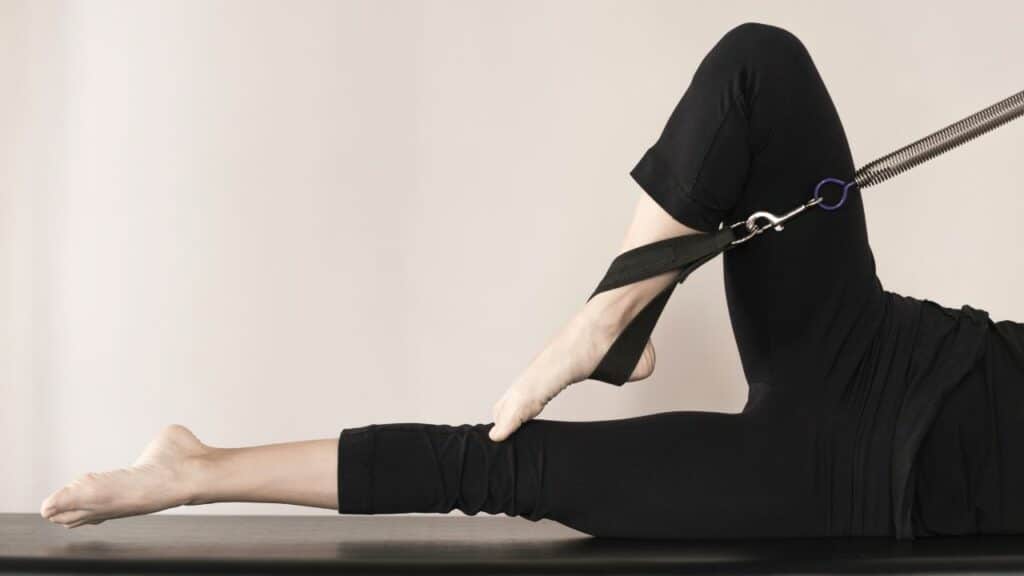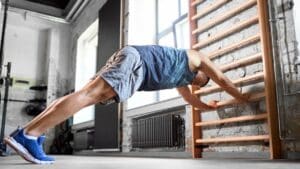
Hello and welcome to the Pilates world, where 12 million enthusiasts find their center and strength. Whether you’re just starting out with Mat Pilates or looking for a new challenge in Reformer Pilates, there’s a spot here just for you. It’s all about finding what fits best with your lifestyle.
Have you heard about Stott Pilates? It’s all about precision, posture and spine alignment. Or maybe Windsor and Power Pilates, known for their dynamic and robust workouts. Each method brings something special. Let’s learn a bit more and find the type of Pilates style that best resonates with your personal fitness goals.
Classical Pilates
Classical Pilates is rooted in the original method developed by Joseph Pilates in the 1920s. This traditional approach follows a specific sequence of exercises aimed at enhancing alignment, core strength, and the mind-body connection. The exercises in Classical Pilates are carefully structured to progress in difficulty as you advance in skill level.
Starting with foundational movements that emphasize proper breathing and core engagement, Classical Pilates gradually introduces more challenging exercises that require strength, flexibility, and coordination. Transition exercises, often overlooked in modern practices, play a vital role in ensuring a smooth flow between movements, enhancing endurance and precision.
How it’s different: Classical Pilates remains faithful to Joseph Pilates’ original routines, focusing on precision and flow in exercises, which distinguishes it from more modern adaptations that may incorporate contemporary movements or equipment.
Mat Pilates
If you’re interested in a Pilates method that’s easy to do at home and doesn’t require much equipment, Mat Pilates could be the perfect fit for you. The benefits of Mat Pilates are numerous, including improved flexibility, balance, strength, and posture. This approach focuses on controlled movements done on a basic mat, which is great for beginners.
How it’s different: Mat Pilates stands out due to its accessibility and simplicity, allowing practitioners to focus on core strengthening and flexibility without the need for specialized equipment like Reformer Pilates. While different types of Pilates equipment can add variety and intensity to your workout, Mat Pilates provides a strong foundation for building core strength and flexibility at home without the need for costly gear.
Contemporary Pilates
If you’re looking to add some spice to your Pilates routine, Contemporary Pilates might be just what you need. Building on the traditional Pilates principles, this modern approach incorporates the latest fitness trends to create a dynamic and versatile workout experience.
Contemporary Pilates embraces innovation by incorporating props like stability balls, resistance bands, and foam rollers to intensify your workout. Instead of a rigid routine, this method focuses on creating a personalized blend of movements that work best for you.
How it’s different: Contemporary Pilates stands apart by incorporating modern exercise science and a variety of props, emphasizing functional movements to correct muscle imbalances, offering a dynamic and personalized workout experience beyond traditional Pilates.
Reformer Pilates
If you’re looking to take your Pilates workout up a notch, Reformer Pilates might be just what you need. Unlike traditional mat Pilates, Reformer Pilates involves using a special machine called a reformer that provides resistance training for a more intense exercise session. This equipment includes a sliding carriage equipped with springs, ropes, and pulleys. The springs offer adjustable resistance, allowing you to tailor the workout to your fitness level. As you move the carriage, you’ll challenge your balance and engage your core muscles for a full-body workout.
How it’s different: Reformer Pilates sets itself apart by utilizing specialized equipment, enabling a unique, intense workout. It targets both strength and flexibility while adhering to Pilates’ core principles, providing a challenging yet holistic exercise experience.
Clinical Pilates
Clinical Pilates, unlike Reformer Pilates which focuses on intense workouts, takes on a more therapeutic approach. It’s commonly used in rehabilitation settings, especially by physiotherapists to assist patients in their recovery from injuries or the management of chronic health conditions.
The benefits of Clinical Pilates in physiotherapy are extensive. It helps enhance muscle balance, functional movements, and overall body strength. By honing in on specific muscle groups, it encourages muscle stabilization exercises that can significantly contribute to injury prevention strategies.
How it’s different: Clinical Pilates distinguishes itself by its medical and rehabilitative focus, offering customized exercise plans based on individual assessments to address specific health issues, making it a preferred choice for therapeutic exercise and injury recovery while maintaining core Pilates principles.
Stott Pilates
Stott Pilates, created by Lindsay and Moira Merrithew, offers a contemporary approach to the traditional Pilates method, with a strong focus on maintaining the natural curvature of the spine (neutral spine). This method places special emphasis on aligning the spine, supporting the joints, and realigning the muscles. It aims to restore the natural curves of the spine and rebalance the muscles surrounding the joints, which can be especially beneficial for individuals dealing with spine, neck, back, or shoulder issues.
Incorporating modern insights into body mechanics, Stott Pilates includes adaptations to cater to various body types and abilities. It encourages the use of tools like stretching bands and weights to enhance the workout, target specific muscle groups, and improve the overall outcomes of your Pilates sessions.
How it’s different: Stott Pilates stands out by focusing on the spine’s natural curvature and postural alignment. It differs from traditional methods by using strength training to target specific muscle groups and integrating contemporary biomechanical principles.
Winsor Pilates
Winsor Pilates, created by Mari Winsor, is a popular method that focuses on enhancing core strength and coordinating breathing for improved body performance. Unlike Stott Pilates which emphasizes the spine’s natural curve, Winsor emphasizes a dynamic sequence of exercises sculpt the body more quickly. By engaging in targeted exercises, this program aims to boost metabolism, and facilitate weight loss, helping you achieve a more toned physique.
How it’s different: Winsor Pilates sets itself apart with its faster pace and the incorporation of additional resistance to maximize results. Unlike traditional methods that may focus on slow, controlled movements, Winsor emphasizes quick transitions and intensity for enhanced body sculpting and cardiovascular benefits.
Notable Mention: Other Types of Pilates
In addition to the mainstream types of Pilates methods, there are several lesser-known variations that offer unique perspectives and benefits. These innovative approaches cater to diverse needs and preferences, expanding the traditional Pilates repertoire.
Power Pilates
Power Pilates is an intensified version of traditional Pilates, focusing on a more vigorous workout to strengthen the body, boost endurance, and solidify core stability. This method intensifies classical Pilates techniques with powerful movements, incorporating equipment like weights, bands, sliders, rollers, and balls to enhance traditional mat or reformer exercises. It’s aimed at those who wish to push their fitness levels further in a challenging Pilates format.
How it’s different: Power Pilates elevates traditional practices by increasing the workout’s intensity and pace, suitable for those seeking a challenging, athletic session. It uniquely blends classical Pilates principles with added resistance and cardiovascular elements for a comprehensive, high-energy workout.
Wall Pilates
Wall Pilates uses vertical surfaces to enhance traditional exercises, focusing on core strength, balance, and posture. By incorporating the wall, this method challenges stability and provides unique support for movements, adding depth to core engagement and alignment.
How it’s different: Wall Pilates introduces an innovative use of the wall, offering unique challenges and support compared to traditional floor exercises, deepening core engagement and improving overall balance and posture. It is particularly beneficial for beginners and an ideal Pilates for seniors.
Fletcher Pilates
Fletcher Pilates is a derivative of the classical method, developed by Ron Fletcher, a direct disciple of Joseph Pilates. This approach emphasizes continuous, flowing movements, breathwork, and precise body alignment. Fletcher Pilates introduces unique elements such as the Fletcher Towelwork®, Barrework®, and Floorwork techniques, adding new dimensions to traditional exercises.
How it’s different: Fletcher Pilates extends the classical repertoire with distinctive breathing techniques, percussive breathing, and an emphasis on elongation and movement fluidity. It’s known for its attention to detail and the seamless transition between movements, providing a comprehensive and holistic workout.
Hybrid Pilates
Hybrid Pilates combines traditional Pilates principles with other fitness disciplines such as yoga, dance, and cardio, creating a multifaceted and comprehensive workout. This variation adapts to individual fitness goals, improving body composition, energy levels, and flexibility. Types of hybrid Pilates include TRX Pilates and the 3-2-8 Pilates method, which integrates three weight training sessions, two Pilates or barre workouts per week, and a daily goal of 8,000 steps, balancing strength, flexibility, and cardiovascular health.
How it’s different: Hybrid Pilates offers a diverse workout by blending Pilates with other disciplines, like weight training, barre, spin, or walking, leading to a well-rounded fitness experience.
What Type of Pilates Fit You?
So, there’s no one-size-fits-all when it comes to Pilates. Whether you’re a newbie dipping your toes in the water with Mat Pilates or a seasoned fitness enthusiast seeking the intensity of Reformer Pilates, there’s a method for you.
Remember, Pilates isn’t just a workout—it’s a journey that enhances your strength, flexibility, and wellness. So, don’t be afraid to roll with the punches and find the Pilates method that fits like a glove with your lifestyle and needs.



